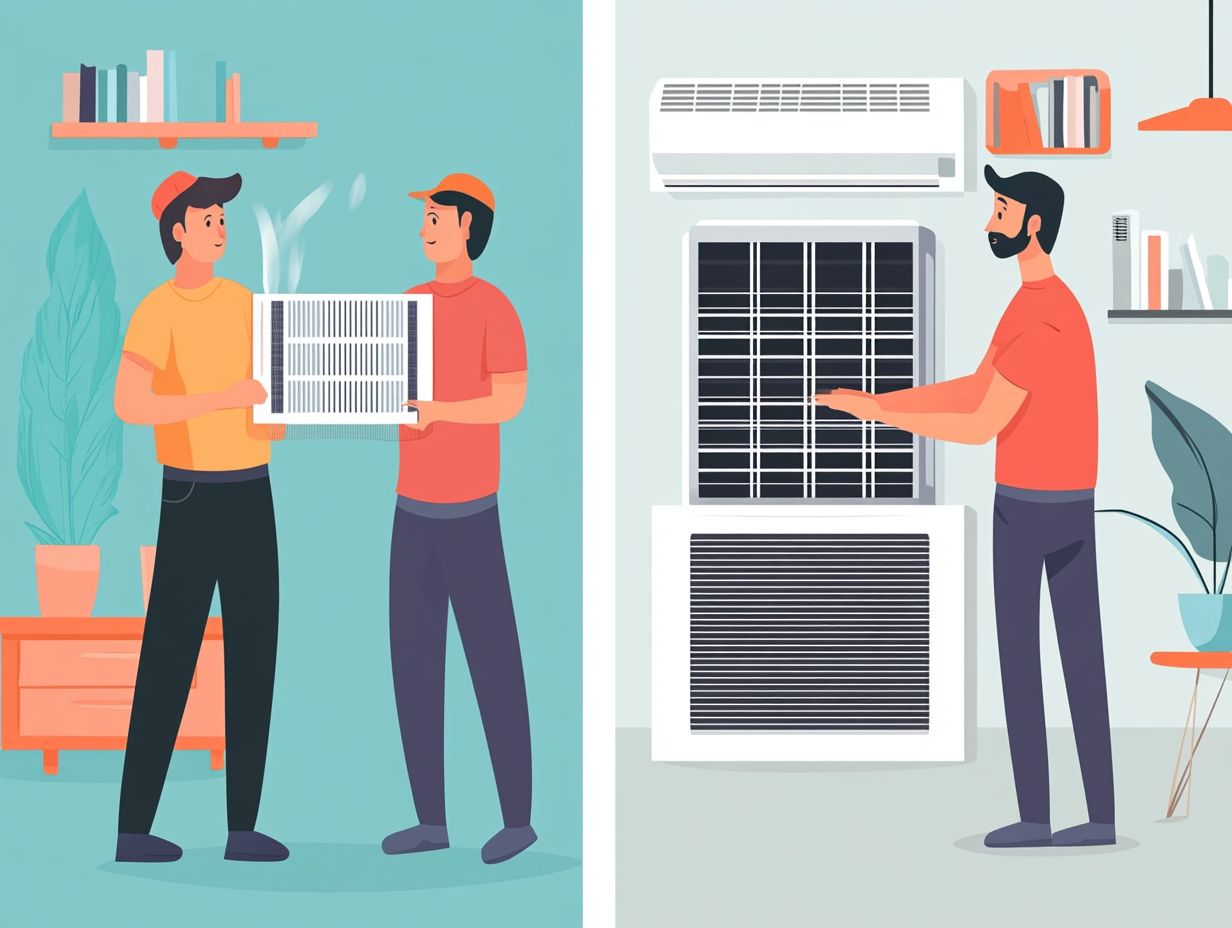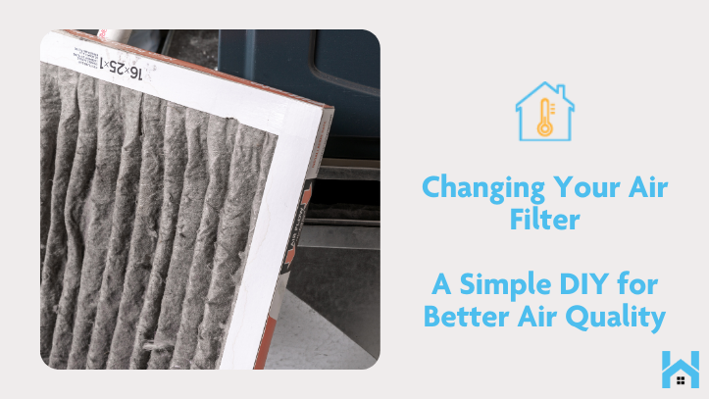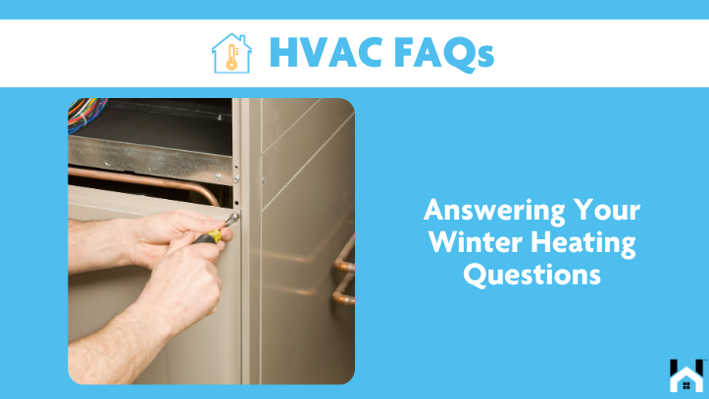When discussing HVAC systems, it is important to recognize that misinformation can lead to inefficiencies and increased energy costs. Many homeowners cling to common myths, believing that these misconceptions will save them money and enhance their comfort.
This article aims to debunk some of the most widespread misconceptions, such as the belief that closing vents saves energy or that larger systems are always superior.
By clarifying these myths, we aim to give the power to you to make informed decisions about your HVAC system, ensuring optimal performance and efficiency for your home.
Continue reading to uncover the truths behind these misconceptions and learn how to better care for your heating and cooling systems.
Understanding the Impact of HVAC Systems

HVAC systems are essential for maintaining indoor air quality and comfort, as they regulate temperature, humidity, and airflow in both residential and commercial spaces. These integrated systems not only provide heating and cooling but also improve ventilation, which is crucial for minimizing airborne contaminants.
Energy efficiency is a key aspect of modern HVAC technologies, which are designed to reduce energy consumption while maximizing output through features such as smart thermostats and variable speed motors. Enhanced indoor air quality is achieved by filtering out dust, allergens, and other pollutants, contributing to a healthier living environment.
The environmental impact of HVAC systems is significant and should not be overlooked. By opting for energy-efficient models, users can help lower greenhouse gas emissions and reduce their carbon footprint. Such awareness encourages individuals and organizations to invest in sustainable practices, ensuring that climate control solutions are both effective and responsible.
Myth: Closing Vents Saves Energy
A common misconception in HVAC practices is the belief that closing vents in unused rooms will conserve energy and reduce utility costs. However, this is not accurate.
In truth, closing vents can interfere with proper airflow, resulting in pressure imbalances within the HVAC system. This imbalance may force the system to work harder to maintain the desired indoor temperature. Consequently, this can diminish energy efficiency and increase wear and tear on the system, ultimately leading to higher energy costs and maintenance expenses.
Understanding the dynamics of airflow and the significance of balanced ventilation is crucial for achieving optimal performance from your HVAC system.
Explanation and Reality
The truth behind the common myth of closing vents hinges on the complex relationship between HVAC system design, airflow, and energy efficiency. When vents are closed, the HVAC system struggles to maintain the desired temperature, resulting in imbalanced heating and cooling loads throughout different areas of the building. This not only affects comfort levels but can also lead to unnecessary wear and tear on components such as the furnace or air conditioning units. Over time, this can significantly impact their lifespan and necessitate more frequent repairs and maintenance.
By understanding proper system sizing and the importance of optimal airflow, one can effectively debunk this myth and encourage better HVAC practices.
In fact, shutting vents can create negative pressure in certain rooms, causing air to be drawn in from less conditioned spaces. Ironically, this leads to increased energy consumption and inefficiency. Such disruptions can also promote conditions favorable to mold growth and indoor pollutants, as the HVAC system may not circulate air effectively.
For those seeking to maximize energy efficiency, regular system maintenance is essential. Additionally, ensuring that ducts are clean and considering variable air volume systems or zoning options can help tailor the system to meet individual space needs without compromising overall performance.
By understanding these implications, homeowners can make informed decisions that contribute to healthier living environments and reduced utility bills.
Myth: Air Filters Only Need to be Changed Once a Year

A prevalent misconception is that air filters in HVAC systems need only be changed once a year. However, adhering to this belief can result in serious problems regarding indoor air quality and system efficiency.
In truth, regular filter replacement is essential for maintaining adequate airflow and ensuring the system operates effectively. Over time, dust, allergens, and other pollutants can accumulate in the filters, obstructing air circulation and causing the HVAC system to work harder. This not only undermines comfort but can also lead to higher energy costs and more frequent breakdowns.
Hence, it is vital to establish a consistent filter maintenance schedule.
The Importance of Regular Filter Changes
Regularly changing air filters is essential for optimizing HVAC performance and improving indoor air quality. Dirty filters can accumulate pollutants that hinder system efficiency. By following a set maintenance schedule for air filter replacement, homeowners can ensure their HVAC systems operate smoothly, providing consistent comfort throughout the year.
Filters serve not only to capture dust and allergens but also play a crucial role in energy efficiency. When filters are clean, air can flow freely, which reduces strain on the system and extends its lifespan. Additionally, understanding MERV filter ratings can enhance air quality and overall system reliability.
Changing filters regularly can lead to significant reductions in energy bills, as an efficient system requires less power to operate. For example, selecting a filter with the appropriate MERV rating allows for the capture of finer particles while still maintaining optimal airflow, effectively balancing filtration and energy savings.
It’s also a good idea for homeowners to set reminders to check filters monthly and replace them every three months—or sooner if they have pets or live in particularly d dusty environments. This straightforward practice not only improves air quality by reducing allergens but also fosters a healthier living space, ultimately making the home more comfortable and less susceptible to respiratory issues.
Myth: Duct Tape is the Best Solution for Leaky Ducts
Many homeowners often assume that duct tape is the perfect solution for leaky ducts, but this common misconception can result in less-than-ideal outcomes and wasted energy. While duct tape might provide a temporary fix, it does not deliver a lasting solution for air leakage in HVAC systems.
Leaky ducts can greatly impact heating and cooling efficiency, resulting in higher energy costs and discomfort in living spaces. It is essential to carry out proper repairs and maintenance on ductwork to ensure optimal system performance and energy savings over time.
Therefore, it is important to understand the limitations of using duct tape as a repair method.
Why Duct Tape is Not a Permanent Fix

Duct tape is indeed a versatile household item; however, it is not intended to endure the conditions found in HVAC ductwork, making it an inadequate solution for addressing air leakage issues. Over time, duct tape can degrade due to fluctuations in temperature and humidity, which ultimately diminishes its sealing effectiveness.
This degradation can lead to wasted energy, as conditioned air escapes through these leaks, forcing the HVAC system to work harder to maintain comfortable indoor temperatures. It is essential to recognize the significance of proper duct repairs and understand how air leakage impacts the efficiency of an HVAC system.
Many homeowners may rely on duct tape for repairs, but this often results in temporary fixes rather than lasting solutions. They might not realize that improper sealing techniques can actually exacerbate the problem, resulting in higher utility bills and discomfort within their living spaces.
Using appropriate sealing materials, such as mastic sealant or specialized HVAC tape, is crucial to achieving a secure seal that can withstand the demands of HVAC operations. This not only helps reduce energy waste but also enhances the overall air quality in the home by minimizing the infiltration of dust and allergens that can enter the airstream through leaks.
Myth: Bigger HVAC Systems are Better
The notion that larger HVAC systems are always superior is a common misconception that can result in inefficiencies and higher energy costs. Oversized units often short-cycle, which can lead to inadequate heating or cooling and poor humidity regulation.
It is essential to properly size the system to balance heating and cooling loads, ensuring optimal performance and energy efficiency. When selecting an HVAC system, it is important to take into account factors such as indoor temperature requirements, insulation, and ductwork design.
Utilizing professional installation services can help ensure that the appropriately sized system is chosen to meet specific comfort needs while maximizing energy savings.
The Truth About Proper Sizing
Properly sizing HVAC systems is essential for maintaining energy efficiency and ensuring comfortable indoor conditions. It is important to accurately calculate both the heating load and cooling load to align with the specific requirements of the space.
This calculation involves analyzing several factors, including the building's insulation, window orientation, and local climate conditions. By understanding these elements, it becomes much easier to determine the amount of heating or cooling necessary to create a pleasant environment.
An accurately sized system operates more efficiently, which helps to reduce energy consumption and extend the lifespan of the equipment. Professional service providers can conduct energy audits to assess the specific heating and cooling needs of a property, ensuring that the selected HVAC system is compatible with its design and usage patterns.
This tailored approach not only enhances comfort but also results in significant cost savings over time. Proper system sizing minimizes the risk of frequent repairs and replacements, ultimately contributing to an overall increase in the property's value.
Myth: Annual Maintenance is Unnecessary

A prevalent misconception in HVAC care is the idea that annual maintenance is not necessary. This belief can result in expensive repairs and reduced system performance.
In reality, regular HVAC maintenance is essential for ensuring both reliability and efficiency. It enables the timely identification of potential issues before they worsen. Seasonal maintenance tasks are crucial for achieving optimal energy efficiency, allowing systems to operate at their best while extending their lifespan.
Furthermore, utilizing professional services for regular maintenance checks not only improves comfort and air quality but also ensures compliance with warranty requirements and building codes.
The Importance of Regular Maintenance
Regular HVAC maintenance is crucial for maintaining optimal performance and energy efficiency. This process involves systematic inspections and adjustments that help identify and resolve issues before they escalate into major problems.
By consistently attending to maintenance tasks, homeowners can feel confident knowing their systems are running at peak efficiency. Important tasks include checking refrigerant levels, tightening electrical connections, and recalibrating thermostats—each of which plays a vital role in the overall effectiveness of the system. These proactive measures not only help prevent unexpected breakdowns but also ensure smoother operation, leading to reduced energy costs.
Moreover, a well-maintained HVAC unit can significantly lower the risk of allergens circulating in the home, contributing to a healthier living environment. It is evident that establishing a prioritized maintenance plan can greatly enhance the system's longevity and reliability.
Myth: Turning Off the AC When You're Not Home Saves Money
Many individuals think that turning off the air conditioning while they're away from home is an effective strategy for saving money. However, this common misconception can ultimately result in higher energy costs and reduced indoor comfort.
When they return to a hot house, their HVAC system has to work harder to cool the space, which increases energy consumption. A more effective solution is to utilize programmable or smart thermostats, enabling homeowners to set schedules that maintain comfort without excessive energy use.
By understanding the dynamics of energy efficiency concerning HVAC settings, one can debunk this myth and encourage better cost-saving practices.
Understanding Energy Efficiency and Cost Savings
Understanding energy efficiency in HVAC systems is essential for achieving cost savings and maintaining a comfortable indoor environment. It involves effectively balancing the use of heating and cooling systems. By employing programmable thermostats, homeowners can optimize their energy usage by adjusting settings based on their schedules. This approach ensures that the systems operate only when necessary, reducing energy waste and prolonging the lifespan of HVAC components by preventing excessive cycling.
When homeowners recognize the factors that influence energy efficiency, such as proper system sizing and regular maintenance, they can make informed decisions that enhance comfort and lower overall energy costs.
Integrating smart technology is also pivotal in enhancing energy efficiency. Advanced systems equipped with sensors can monitor environmental conditions and automatically adjust settings for optimal performance.
Additionally, regular maintenance practices, such as changing filters and scheduling inspections, are vital. These measures help identify potential issues before they escalate into costly repairs. Homeowners should also consider the importance of proper insulation and sealing, as these factors significantly reduce the workload on HVAC units.
By adopting these comprehensive strategies, individuals can create a more energy-efficient home that not only saves money but also supports sustainability.





